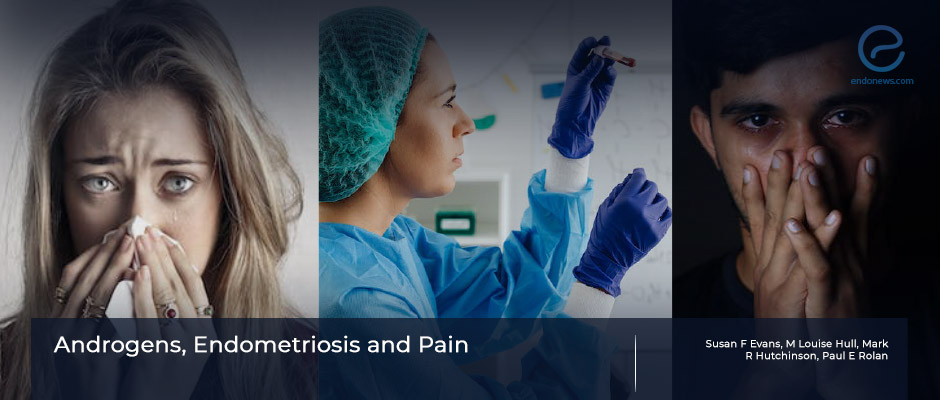What causes pelvic pain? Androgens or estrogens?
Dec 14, 2022
Lower levels of androgens are associated with increased pelvic pain.
Key Points
Importance:
- Decreased androgen levels are associated with a potential mechanism of developing endometriosis and chronic pelvic pain.
Highlights:
- Determining the intriguing relationship between androgens, endometriosis and chronic pain is important.
What's done here:
- This review from Australia is an extension of the publication in the Journal of Pain Research which demonstrated a strong inverse relationship between androgen levels and pelvic and period pain.
- The role of androgens in the etiology and management of dysmenorrhea and pelvic pain in women, both with and without endometriosis is examined.
- The question "Is it estrogens that predispose people to a life of pain or androgens that are protective?" was analyzed.
Key Results:
- The earlier results of the authors revealed a strong inverse correlation between non-Oral Contraceptive (OC) users and low free-androgenic index (FAI).
- Periodic pain, pelvic pain, and headache days-per month were also their area of interest. Increased monthly pelvic and periodic pain days were observed in the non-OC users' group.
- A weekly positive correlation between estradiol and monthly pelvic pain days was found only on 7-10 days of the menstrual cycle who used OC.
- An entirely novel hypothesis was proposed to explain the relationship between dysmenorrhea, chronic pain and endometriosis, and inflammation by the authors.
- Their theory suggests that the above three conditions develop through independent mechanisms, and may all be exacerbated by inflammation.
Lay Summary
A comparison between women and men reveals that women suffer more pelvic pain. This reality raises the possibility of the pain-relieving effect of testosterone or androgens. It would be a wise solution to investigate how androgens affect pain at different stages of life and, if possible, plan pain treatment accordingly.
In this review, Evans et al. from the University of Adelaide, Australia, investigated the relationship between serum levels of 10 steroid hormones and subjective menstrual pain complaints. The research team proposed a novel hypothesis and draw a helpful diagram to explain the relationship between dysmenorrhea, endometriosis, and uterine-neuroimmune circuit to understand the etiology of dysmenorrhea and pelvic pain in young women. This theory explains the lack of correlation between the severity and persistence of symptoms following hysterectomy and endometriosis excision. It also explains the factors associated with increased inflammation, such as reduced testosterone levels, prenatally and postnatally. One or more of these processes could explain an individual's clinic presentation.
While decreasing androgen levels may cause increased pelvic pain and dysmenorrhea, some clinicians prefer to look for ways to maintain or increase their patient's androgen levels. Choosing an intrauterine device rather than an oral contraceptive allows for maintaining ovarian androgen production. Or choosing progesterone-only systemic steroids can avoid the estrogen-induced liver production of Sex Hormone Binding Globulins. The reduction in body mass index can also reduce the additional conversion of androgens to estrogens in adipose tissue. Aromatase inhibitor therapy and combined testosterone prescriptions can be a choice that produces results from this consideration.
"The development of new therapies to reduce inflammation may offer a novel approach to addressing androgen deficiency in women", concluded the authors in this recently published review in the journal named "Frontiers in Reproductive Health".
Research Source: https://pubmed.ncbi.nlm.nih.gov/36303965/
androgens testosterone estrogens oral contraceptives CNS-neuroimmune circuit pelvic pain periodic pain dysmenorrhea headache endometriosis.

